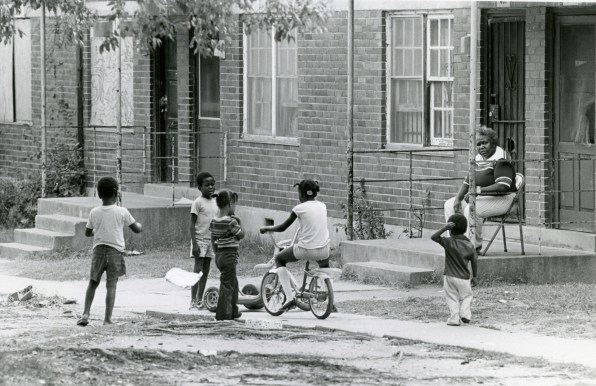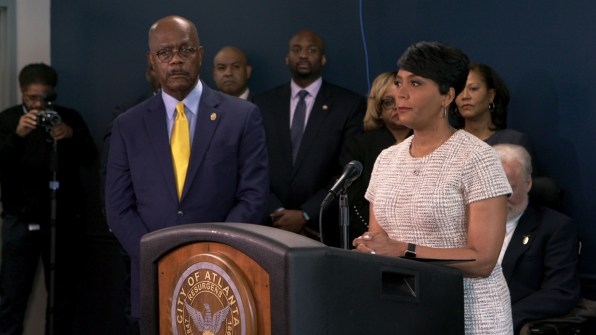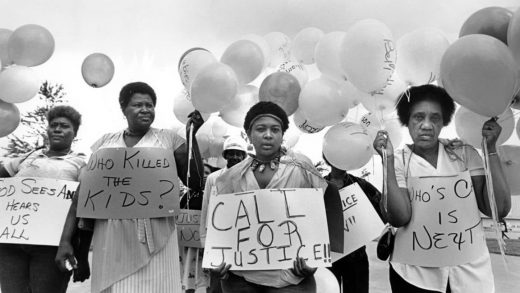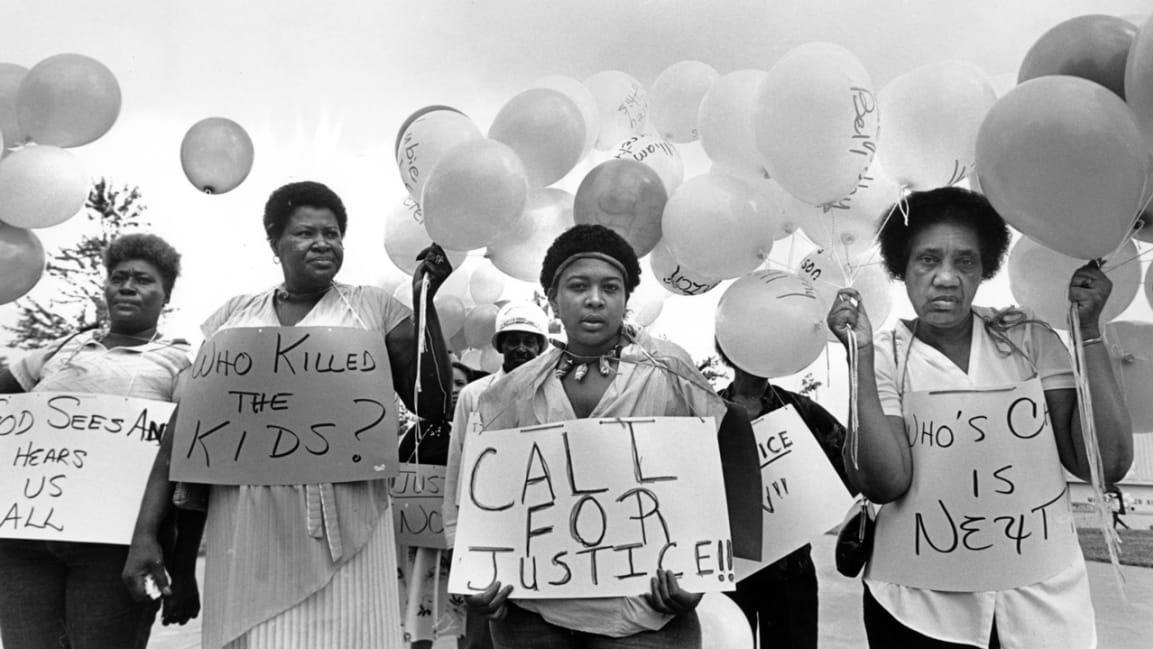The new HBO docuseries ‘Atlanta’s Missing and Murdered: The Lost Children’ transcends true crime
Atlanta is one of the cultural capitals of the world, home to a huge music scene featuring artists such as Janelle Monáe and Migos and film studios from Marvel to Tyler Perry. It’s also the home to such global businesses as Coca-Cola, Delta, The Home Depot, UPS, and many more.
Four decades ago, the city was still very early in its efforts to become a global hub when African-American children in Atlanta’s poorest neighborhoods started being kidnapped and murdered. This tragic series of killings threatened everything that the city’s leadership was trying to build, and the way in which the cases were handled in the late 1970s and early 1980s has never truly been reckoned with.
On Sunday night at 8 p.m., HBO premieres its new documentary series Atlanta’s Missing and Murdered: The Lost Children, which tells the story of the murders and the person who received two life sentences for two of the 29 murders, Wayne Williams, while also weaving a much larger narrative. It’s a tale about a city on the rise and the complicated sociopolitical and cultural issues that not only surrounded the case when it happened but still linger today as racial and class divisions affect not only Atlanta but the nation at large.
Sam Pollard and Maro Chermayeff are two of the directors on the five-part series, which was made by Chermayeff’s Show of Force, an Emmy and Peabody Award-winning production company focused on high-end nonfiction narratives. Our conversation has been edited for length and clarity.
Why this project? What drew you to this story and doing this documentary?
Sam Pollard: The genesis came about because in 2017, I had done a documentary about Maynard Jackson [Maynard], who was the first black mayor of a major southern city. In that documentary, I did a little four- or five-minute segment about the Atlanta child murders and how impactful there were on Jackson, how he struggled with the community and trying to find out who the murderer was. Maro and her colleagues at Show of Force saw that documentary, and they said, “Maybe we should think about doing something that goes a little bit deeper into the issues surrounding that case and the murders.”
Last year, there was a boomlet in stories about these murders, perhaps because of the 40th anniversary of the beginning of the case. There was an ID channel series, the case made an appearance in Mindhunter on Netflix, and there was a podcast, Atlanta Monster. With all that recent effort to wrestle with this case, what do you feel like you bring to this story that’s distinct?
Pollard: We didn’t just want to do a documentary that was a whodunit. We wanted to do a deeper dive, really build the story in terms of looking at the City of Atlanta from a racial and class perspective. This was a much more complicated story than what has been told. We had to look at it from all different angles, sort of like a Kurosawa film like Rashomon.
Maro Chermayeff: Everything that I saw was just kind of, this child was died and this child died, then this child who was the 14th here, the 15th and then oh, the splash on the bridge. It’s a much deeper, much more nuanced story. The level of archives that we were able to dig into and bring to the fore brought the viewer, literally, back into an unfolding story. We’re not using the archive as sparingly as we can as a punctuation point visual. We had the opportunity to really spend six to 10 months gathering archive in a significant way. And I think it tells a very different story.

[Photo: courtesy of Georgia State University/AP/HBO]
There is a fair amount of black trauma in the docuseries. You show a lot of caskets, as well as details on the bodies of the murdered children. The caskets in particular felt like a bit of a recurring motif from that archival footage. How did you make that choice?
Pollard: It was important for us as filmmakers to make sure you saw the horrors of what these parents had to deal with, what these siblings had to look at. We talked about this constantly—how much should we show, how far could we go. As filmmakers who respect the people that we interview, family members and siblings, we’ve tried to be as delicate as possible. We know it’ll be painful for some people, but we also want people to understand how horrific it was.
Chermayeff: The funerals were very dramatic. At one point, they were happening weekly. They were a very emotionally charged part of the experience for the families. They talked about the funerals a lot. You can see from the funerals, people were carried out screaming. There were nurses inside. A lot of the families talked about the intensity of them, and we began to respond to them and look at them a lot after family members had told us about the funerals. We talked a lot about the difference between seeing things in order to understand the gravity of the situation as opposed to vicariously showing or insensitively showing images that nobody should see. But most of the families said, “We lived through it. There’s nothing you’re gonna do that’s gonna make it any worse for us. We know.” We wanted to give them and their pain a voice. And we hope that we did that.
I’m from Atlanta, so I’m very familiar with its whole “city too busy to hate” narrative. I grew up with it. The story started with Mayor Jackson. How did Atlanta evolve as a character in this story over the time of working on this project?
Pollard: You see Atlanta struggle with this. They have a black administration, and they struggle with finding some way to solve the crime. When they hear that splash in the water, and Wayne Williams is crossing that bridge and gets stopped by the police and the FBI, he became the focus. After two years of having young people die week after week, they had to find someone to say this is the person who’s done it, we’ve got to wrap this up. The city of Atlanta was exhausted, emotionally and psychologically, and they had to close these cases.
Chermayeff: Obviously Atlanta was very invested in becoming [a world city]. They were building the airport, they were beginning to court the Olympics . . . .
Yes, and attracting all these national, big companies to come and headquarter there.
Chermayeff: Exactly. So to have that be a city where a child is getting murdered every week . . . .
Pollard: . . . . was not gonna work.
Chermayeff: They were under enormous pressure.
There are a lot of things in the series that struck me as resonant today. The class argument is one. A colleague and I discussed that there are a lot of missing and murdered trans people today, and especially people of color. What are the things that you hope people connect the dots to 2020 in watching this series?
Chermayeff: Racial profiling.
Pollard: The issues of race and class were very dominant in the city, and in some ways they still are—and that exists across the United States. Also, people should have an understanding that this story is not so black and white. I hope this series causes lots of dialogue and debate. When we were in the city of Atlanta for six, seven months of shooting straight, we would be out on the streets or in restaurants, and everyone we talked to—white or black, if they were in their 20s, 30s, 40s, or 50s—they remember the Atlanta child murders. They had some kind of family connection, they were living in the city at the time. It still raises lots of questions. It’s a scar in the city that hasn’t healed. Hopefully this will bring about some discussions to see how they can heal the pain as it still exists in the city.

[Photo: courtesy of HBO]
Chermayeff: This was a huge, huge crime in American history. Yet these young African-American kids were sort of ignored at the time. So many more people know about Ted Bundy than they do about what happened in Atlanta. It is something that got swept under the rug in a lot of ways. Whether Wayne Williams did or did not commit all of the crimes, he was given an unfair and railroaded trial. That is just evident. His appeal was thrown out and dismissed, and there was a political power play going on in how this went down. Those things still happen today. There are still many, many people whom for just straight out racism get thrown under the bus. This is a case that the now white chief of police and the black mayor, young woman, are reopening and relooking at [these cases] and saying, “Hey, something may have gone wrong here. We may have not done these people well. We’ve done these families a disservice.” It’s really relevant to think about that in terms of some of the things that still happen today in cases in most big cities.
Fast Company , Read Full Story
(46)



